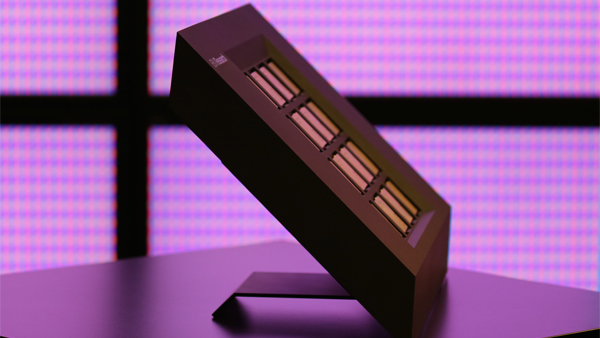US government to put IBM's brain-inspired supercomputer to the test
In the name of national security, of course

The US government's Lawrence Livermore National Laboratory (LLNL) has enlisted IBM's brain-inspired, 16-chip supercomputer system, with plans on testing just how well deep machine learning can help with the nation's security.
The supercomputer system, which is scalable as needed, uses 16 of IBM's TrueNorth chips. They each can process sensory data in parallel, mimicking how a brain works (also know as neuromorphic computing), all the while using less power than has traditionally been demanded by machine learning systems.
Each postage stamp-sized chip is home to one million neurons, 256 million synapses and 4,096 parallel cores, and only requires 70 milliwatts of power running in real time (about what your iPad draws, if you're curious).
"Like the human brain, neurosynaptic systems require significantly less electrical power and volume," IBM explained.
Oh, and it also delivers 46 giga synaptic operations per second - a factoid we're going to assume is mind-bendingly impressive.
Testing brain-inspired chips
The LLNL research facility, located in California, will be using IBM's TrueNorth system to explore "new computing capabilities" for the National Nuclear Security Administration's missions, which includes the safety and security of the country's nuclear deterrent commitments.
"Neuromorphic computing opens very exciting new possibilities and is consistent with what we see as the future of the high performance computing and simulation at the heart of our national security missions," said Jim Brase, LLNL's deputy associate director for Data Science.
Get daily insight, inspiration and deals in your inbox
Sign up for breaking news, reviews, opinion, top tech deals, and more.
"The potential capabilities neuromorphic computing represents and the machine intelligence that these will enable will change how we do science."
The $1 million supercomputer will represent a total of 16 million neurons and 4 billion synapses. IBM will also supply an ecosystem that will help the LLNL create, program and test "energy-efficient machines that mimic the brain's abilities for perception, action and cognition."
If you were mildly concerned that the robot apocalypse was nigh, this probably isn't the most calming of news.